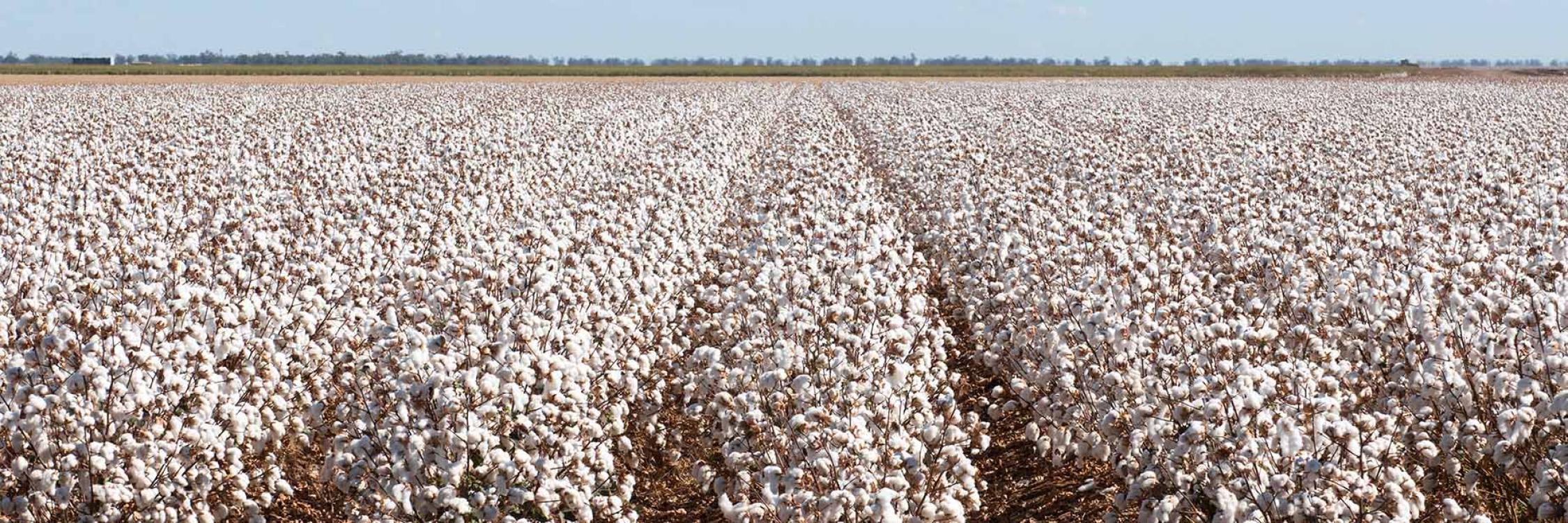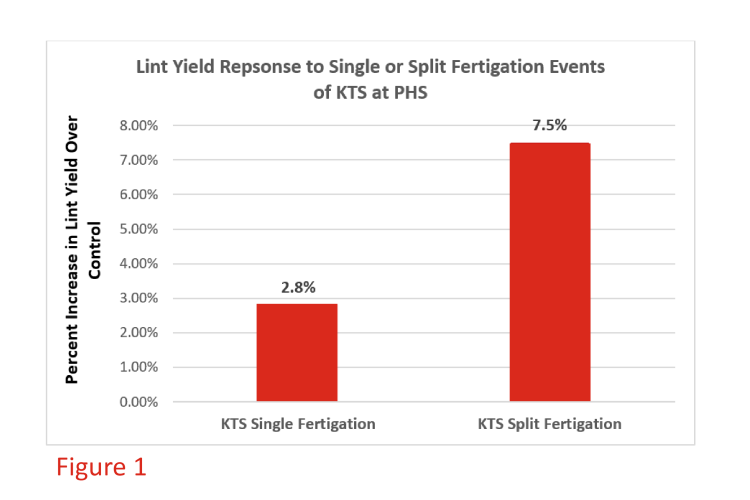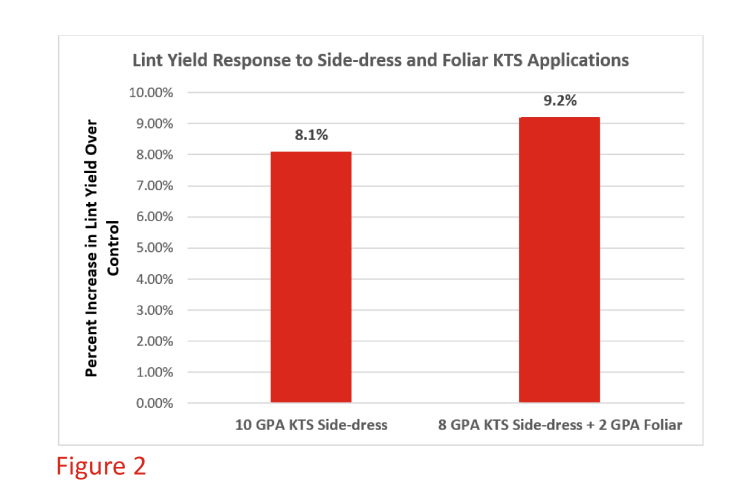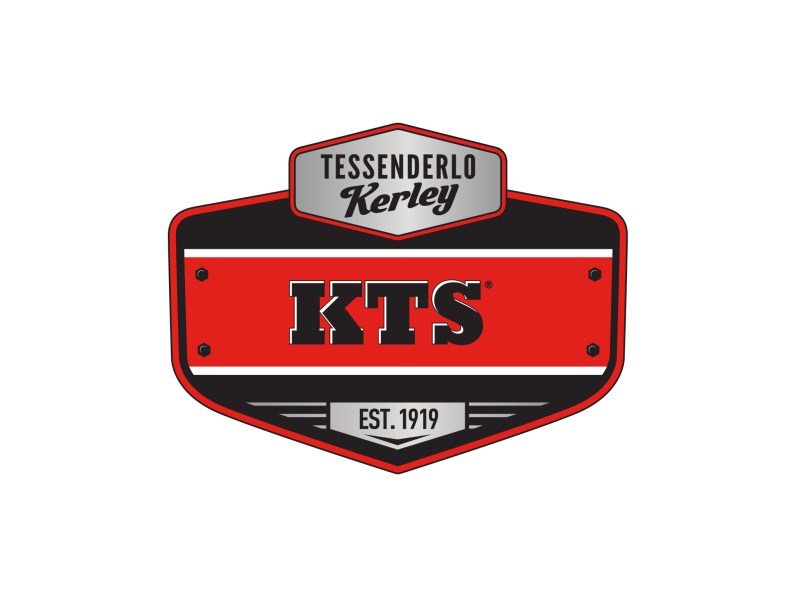
How to Boost Cotton Lint Yields with KTS
Recent research studies conducted in collaboration with Texas A&M University have shown positive results to using KTS® in-season to meet potassium (K) needs of cotton. Application methods evaluated include side-dress coulter applications, side-dress applications through sub-surface drip irrigation and foliar applications.
When using KTS in a subsurface drip irrigation system, greater yield benefits were found by split applying KTS in-season around first pin head square (PHS) rather than making one single application at PHS (Figure 1). Additionally, when a foliar KTS application was included as part of the nutrient program, yields were further improved. Including a 2 GPA foliar KTS treatment at early bloom further increased yields by 2.6%. For clarity, the fertigation treatments that included a foliar application still received the same amount of KTS in season as the fertigation only treatments, part of it was just reserved for a foliar application.

Figure 1
Lint yield response to single or split applications of KTS compared to the control treatment. KTS was applied at 10 GPA in the single fertigation application and 5 GPA twice in the split fertigation treatment.
When evaluating KTS side-dress applications that were applied in the row centers via coulter injection, similar yield responses were observed. Applying 10 GPA of KTS at PHS increased lint yield by 8.1% compared to the check treatment. When 8 GPA of KTS was applied side-dress at PHS and 2 GPA of KTS was applied at early bloom as a foliar treatment, yield was improved 9.2% (Figure 2). It is important to note that the soil test K value in the top six inches of this trial area was above 400 ppm and response to potassium fertilizer was still seen. These findings demonstrate how important it is to have potassium available at critical plant growth stages to maximize cotton lint yield. Using liquid KTS as part of a well-balanced fertility program can help meet those needs, even in soils with high K values where environmental conditions may limit K availability.

Figure 2
Lint yield response to side-dress coulter applications of KTS at PHS with or without a foliar KTS application at early bloom compared to the control.

What is KTS?
KTS is a clear, nitrate and chloride-free fertilizer that features the highest liquid potassium and sulfur content available on the market. KTS is a neutral to basic, clear liquid solution, containing 25% potash and 17% sulfur. Each gallon of KTS contains 3 pounds of potash (K20) and 2.1 pounds of sulfur (S).
Benefits
- A highly efficient chloride and nitrate-free liquid source of potassium and sulfur
- Provides a unique form of sulfur that can improve nitrogen use efficiency
- Blends well with many common liquid fertilizers
- Improves phosphorus and micronutrient availability and uptake by the crop
- Enhances crop resistance to environmental stress
Written by Dr. Elizabeth Lemings, Crop Vitality, Tessenderlo Kerley Agronomist
Contact a Specialist